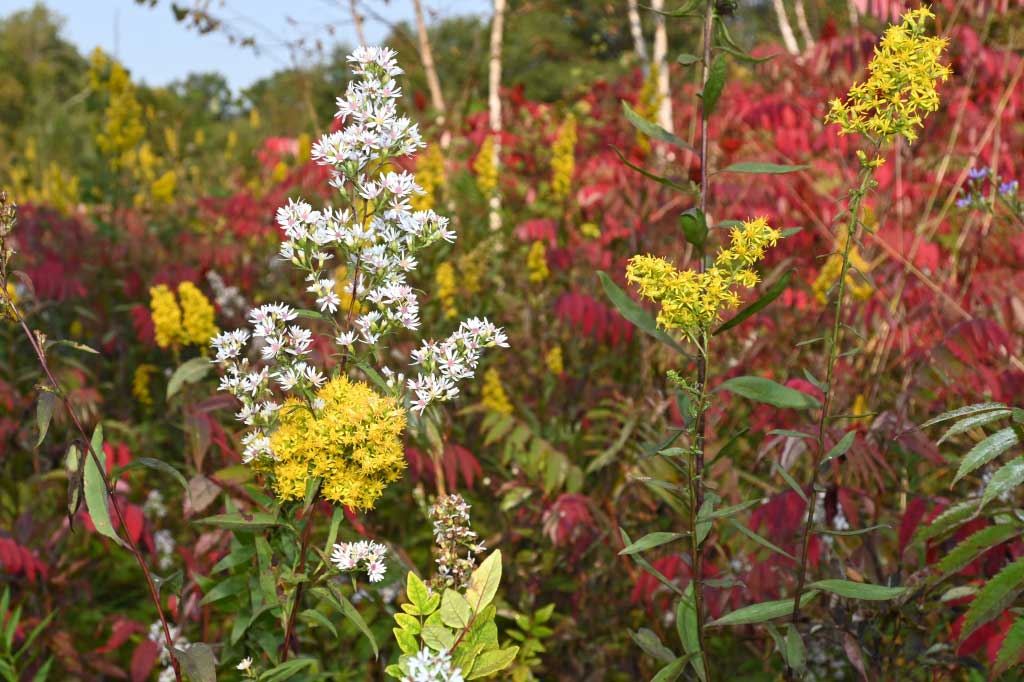The Game Of Leaf Color Prediction
By Deborah Locke, DNR Information Officer
Maybe like most of us in the fall, you’ve been to a few Minnesota state parks and walked Minnesota state trails and enjoy the leaf color. And maybe you’ve even wondered what phenomena brings on such lovely, vivid scenery.
We decided to ask an expert about leaf color, and what influences it. Does climate change have an impact on fall color in state parks, or sunlight? Yes, both. But it turns out that daylength is the biggest factor affecting a tree’s production of chlorophyll, the chemical that produces that familiar green hue. Also, some trees are more sensitive to weather factors like temperatures. And other trees, like red maples, reach peak color at a more consistent time every autumn throughout Minnesota — no matter how warm the fall was.
These fun facts and many more came from a conversation with Brian Schwingle, a natural resources program consultant with the DNR. One fact became clear right away: there are no predictable rules for most leaf color changes because many climate factors interact every year, and those unique combinations impact each tree species slightly differently. Look at any forest in the fall months and you’ll see a range of color, from summer green to brown. Ordinary weather conditions like drought, rainfall, and early cold temperatures each have an impact on when colors change. Severe weather conditions born of climate change have an impact too, like this year when excessive rains promoted leaf disease, resulting in browning and leaf loss on poplars throughout Minnesota.
In spite of all that, the statement about no predictable rules is true, except for this. The DNR-produces fall color maps which you can find on the DNR website. Over the last ten year, the color finder shows one consistent earlier color predictor: frost. When an area in the northern half of Minnesota receives frost in early September, it’s almost a given that peak color will occur there a little over two weeks later.
“There’s no rhyme, no consistency with these predictions unless we get early frost, the clearest signal for upcoming peak colors,” Brian said.
Some trees, like red maple, operate on their own color spectrum clock more than neighboring tree species. If climate change-induced warm September nights occur, the red maple leaves will fall before adjacent birches and oaks.
The entire process of color change and leaf loss is to help the tree tolerate winter and conserve nutrients. Tree species rely heavily on daylight as a cue for chlorophyll production, and as fewer hours of sunlight occur in late summer, trees make less chlorophyll. Sunlight breaks down remaining chlorophyll, and other leaf colors like yellow, orange, and brown become evident as the green color disappears.
Climate variables and calendars aside, there’s another feature that works into a park visitor’s perception of peak color. Expectation. A woman from out of state drove to Minnesota’s North Shore after consulting the DNR colorfinder map, and then called Brian to complain. She expected to see vibrant maple leaves which reach peak color relatively early in the season.
Brian was at the North Shore that same weekend and marveled at the striking yellow aspen, birch, and tamarack leaves. “It’s a personal thing,” he said. Where he saw beauty in yellow deciduous trees contrasting smartly with conifers’ green, she saw leafless maples.
Yet, even at the close of the season, there’s beauty to behold. Brian said some aspen clusters’ leaves of brilliant yellow along with tamarack’s almost orange glow are the last to fall in northern Minnesota. Set those against a bright blue sky? They’re as lovely as the best of the maple at their peak.
To locate a state park near you, go to mndnr.gov/parkfinder. There is a vehicle entrance fee of $7 which is good for one day. Before you leave, go to the park website for any visitor alerts.











